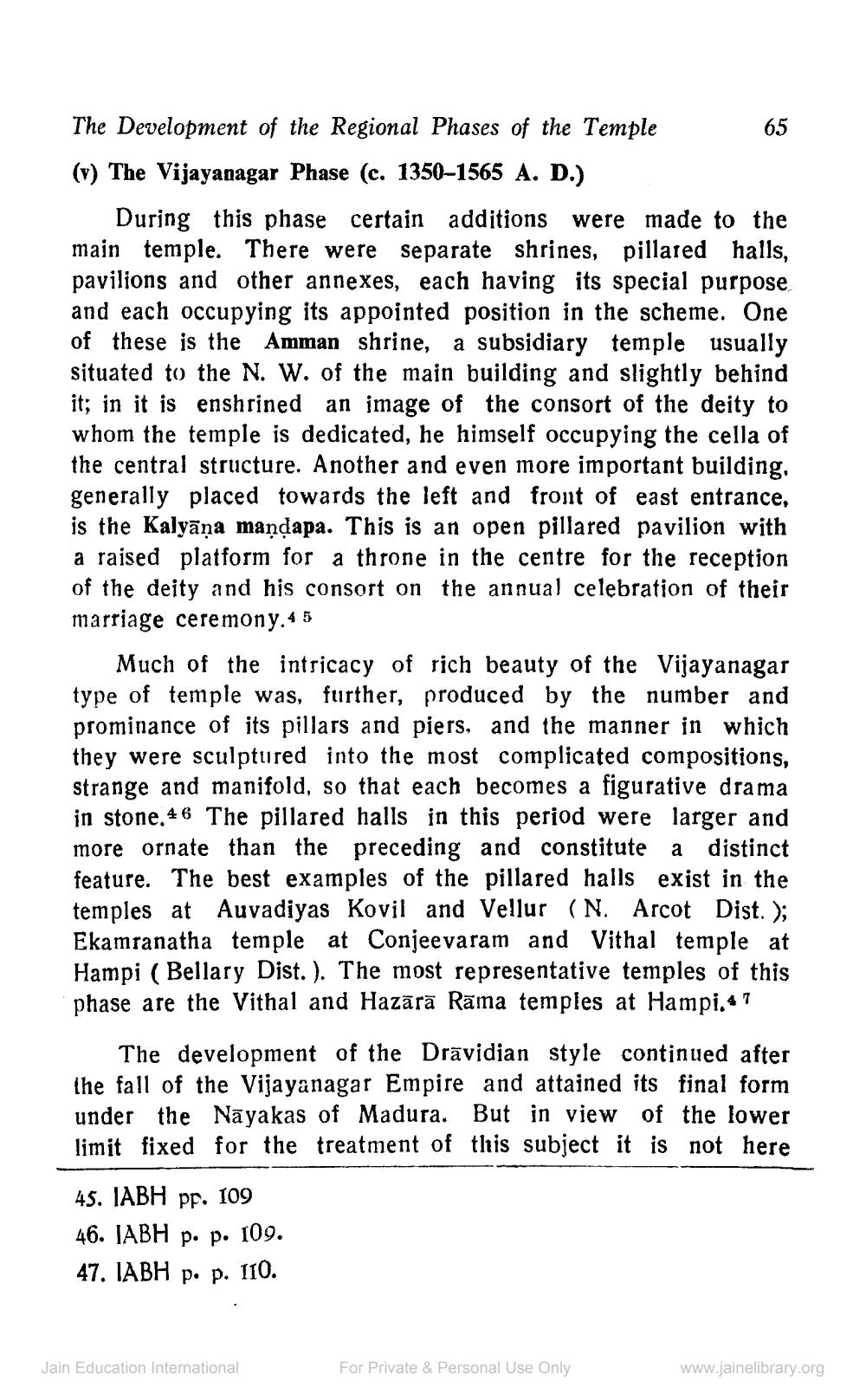________________
The Development of the Regional Phases of the Temple (v) The Vijayanagar Phase (c. 1350–1565 A. D.)
During this phase certain additions were made to the main temple. There were separate shrines, pillared halls, pavilions and other annexes, each having its special purpose and each occupying its appointed position in the scheme. One of these is the Amman shrine, a subsidiary temple usually situated to the N. W. of the main building and slightly behind it; in it is enshrined an image of the consort of the deity to whom the temple is dedicated, he himself occupying the cella of the central structure. Another and even more important building, generally placed towards the left and front of east entrance, is the Kalyāṇa maṇḍapa. This is an open pillared pavilion with a raised platform for a throne in the centre for the reception of the deity and his consort on the annual celebration of their marriage ceremony.45
Much of the intricacy of rich beauty of the Vijayanagar type of temple was, further, produced by the number and prominance of its pillars and piers, and the manner in which they were sculptured into the most complicated compositions, strange and manifold, so that each becomes a figurative drama in stone.46 The pillared halls in this period were larger and more ornate than the preceding and constitute a distinct feature. The best examples of the pillared halls exist in the temples at Auvadiyas Kovil and Vellur (N. Arcot Dist. ); Ekamranatha temple at Conjeevaram and Vithal temple at Hampi (Bellary Dist. ). The most representative temples of this phase are the Vithal and Hazārā Rāma temples at Hampi.*7
65
The development of the Dravidian style continued after the fall of the Vijayanagar Empire and attained its final form under the Nayakas of Madura. But in view of the lower limit fixed for the treatment of this subject is not here
45. IABH pp. 109
46. IABH p. p. 109.
47. IABH p. p. 110.
Jain Education International
For Private & Personal Use Only
www.jainelibrary.org




